Selected works from the Studio of Bernard Myers
12.30pm, Tuesday 30th November
Bernard Myers (1925-2007) lived and worked at St Peter’s Wharf, just at the end of Chiswick Mall; his widow, Pamela Myers, died at the beginning of this year. We are now privileged to present some 100 items from his studio in 73 lots, to show the full breadth and depth of Bernard’s remarkable oeuvre in this much anticipated offering.
Head of Paintings & Fine Art, Adrian Biddell, discusses Bernard’s work and the range of the upcoming sale.
VIEW ONLINE CATALOGUE
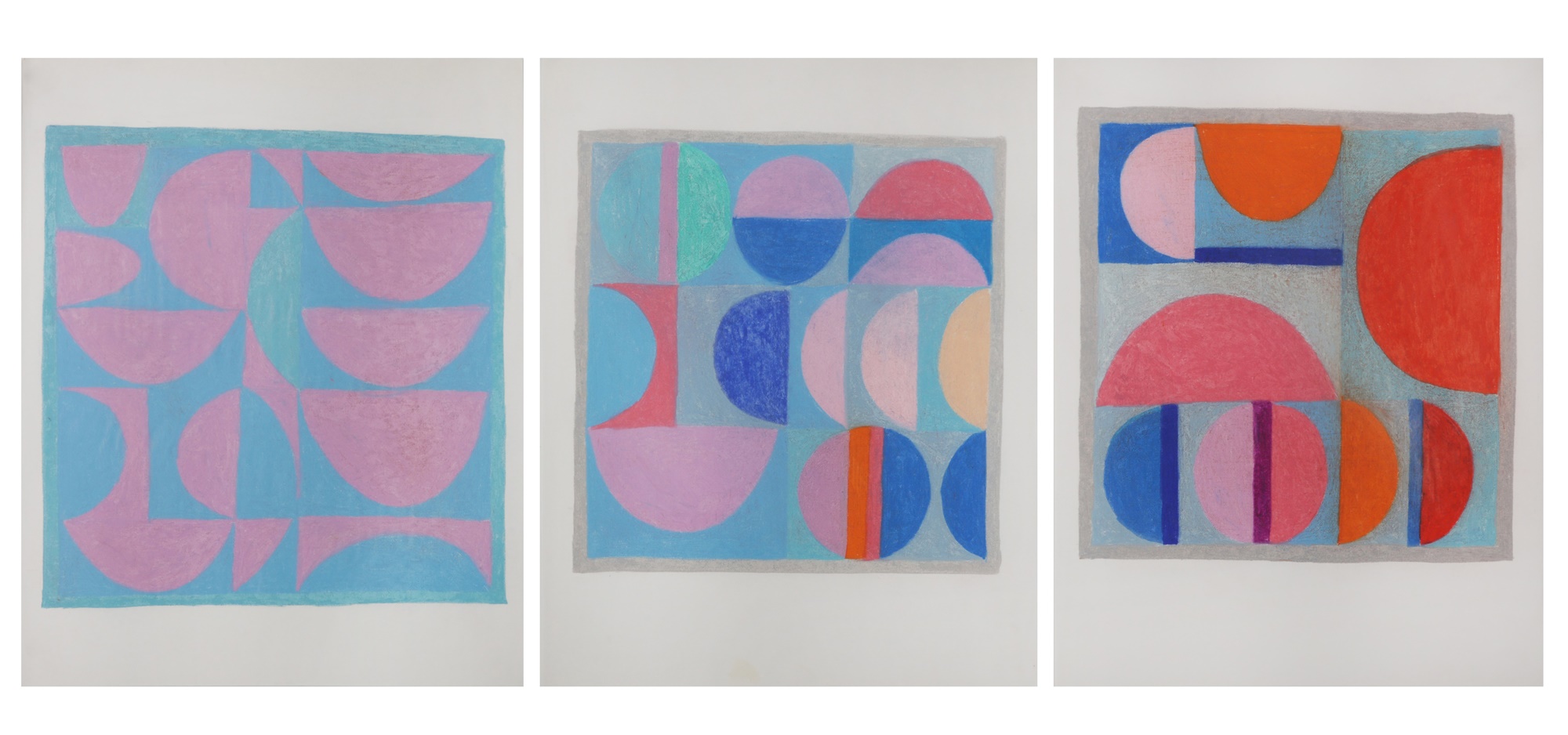
LOT 752 - ABSTRACTS WITH SEMI-CIRCLES: SET OF 3 - PASTEL ON PAPER - £300-500
The upcoming sale of more than 70 lots – by far the largest and most comprehensive sale of his work to date – showcases Bernard’s remarkable exploration of different media and painterly techniques, his keen appreciation for light and colour, and his unerring sense of design. As well as oils, pastels and prints, the auction features a quantity of Bernard's sketch books, art books and catalogues from his extensive library, tools and studio props, and several handsome pieces of furniture formerly in the possession of the 19th century painter Sir Luke Fildes, Pamela’s grandfather. Dating from the 1950s to Bernard’s final years in Chiswick, the variety of subject matter reflects his extensive range of interests and combines his life-long fascination with machines and engineering with his love of nature.
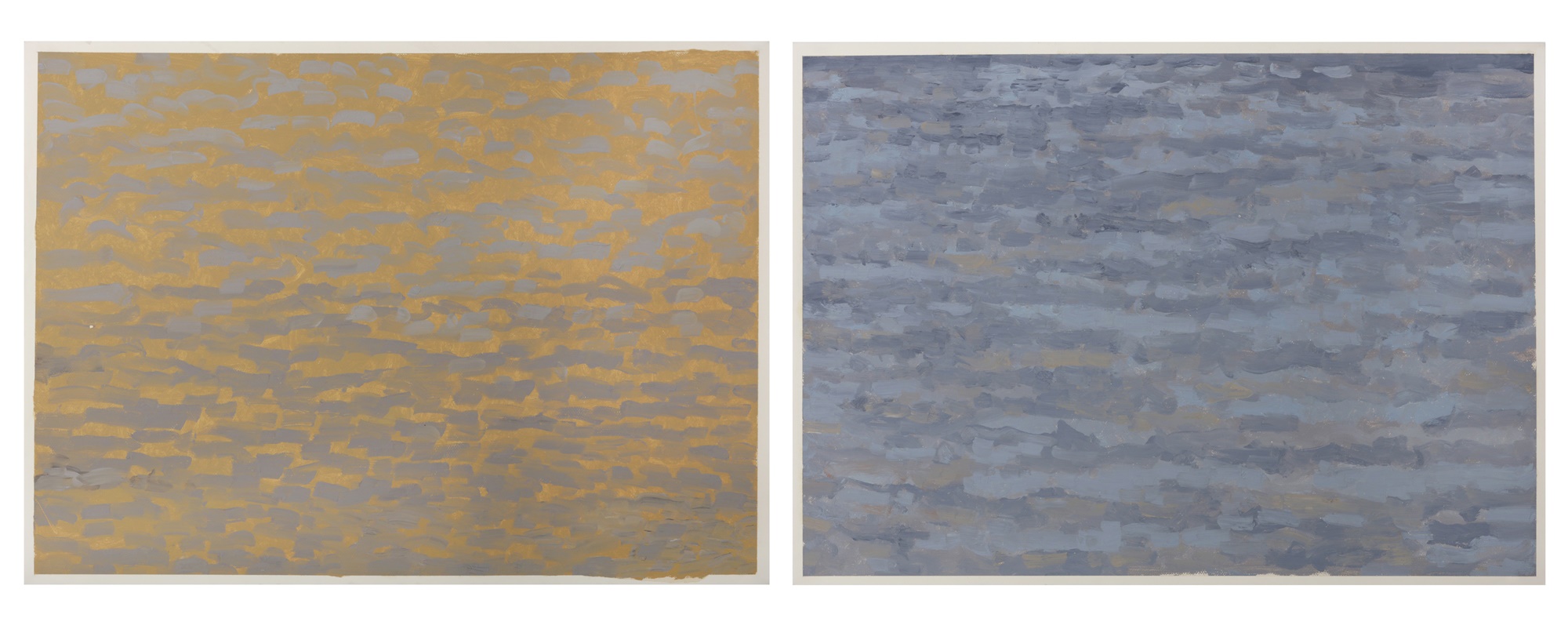
LOT 735 - WATER STUDIES (THE THAMES): A PAIR - OIL ON PAPER - £250-350
Early oils in the sale include a vista from his Windsor studio across the town’s rooftops, views of the Thames estuary, and waves breaking on the seashore. An incessant painter and sketcher, his later travels north are recorded in a range of landscapes including views of the Paps of Jura, the Forth Bridge and the Tyne. The south is represented by London scenes including several celebrating bridges over the Thames. Further afield the architecture, canals and scenes of life of Venice are a feature.
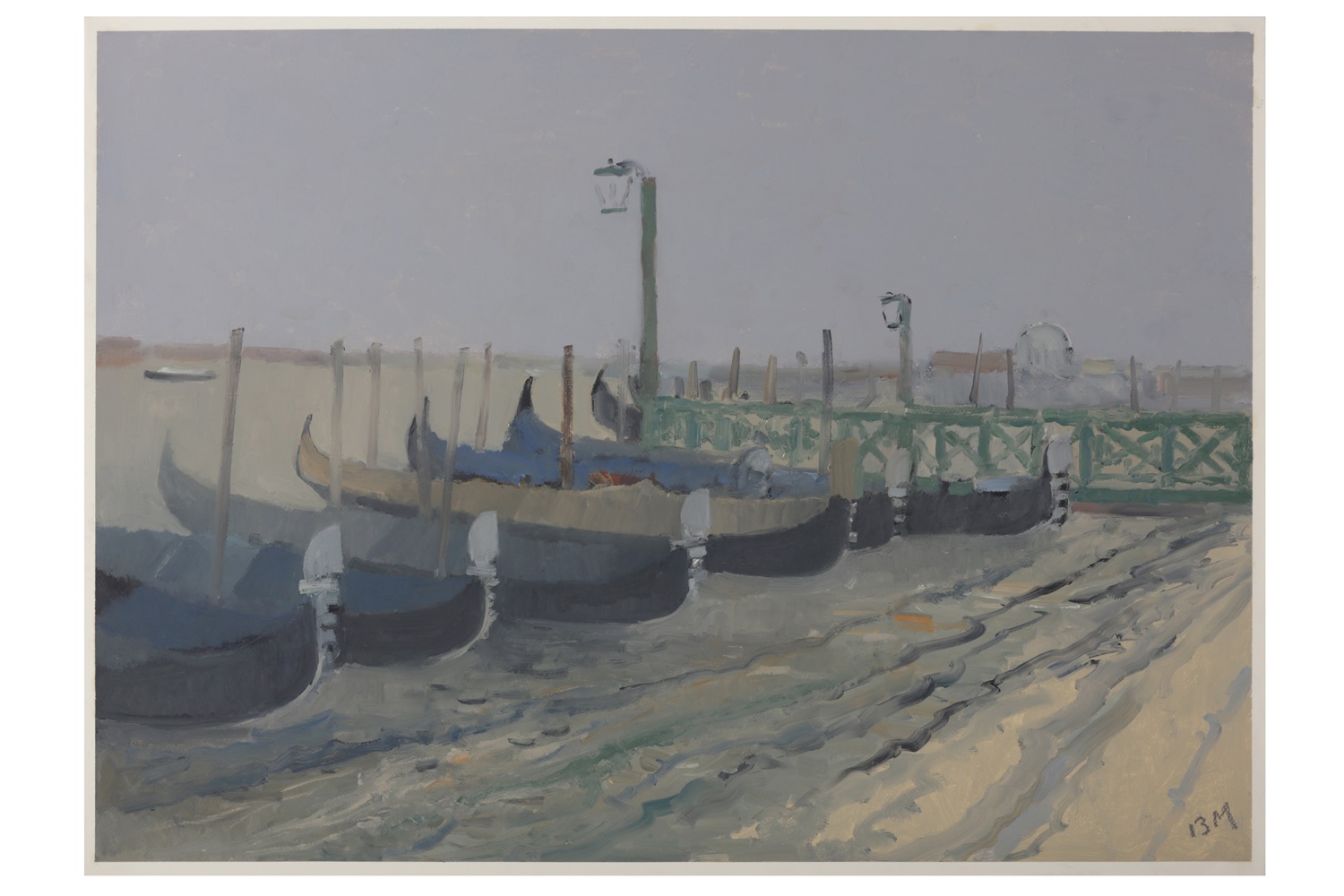
LOT 732 - GONDOLAS ALONG THE MOLO, VENICE - OIL ON PAPER - £500-700
A reviewer of Bernard’s Venice pictures at the Neville Gallery, Canterbury in 1995 enthused: ‘Here was a Venice which I recognised – a city of dirt, smells, mist and oily water. It struck me that this was Venice as the Venetians see it.’ (Laura Gascoigne ‘Venice in Autumn’ in Artists & Illustrators, 1995, p. 10) Views of Spain, India and Mauritius also feature in the sale. Painted on small-scale with pigments lathered on with exquisite technical facility, these fresh evocative scenes evoke the sights, sounds and colour that invigorated his travels.
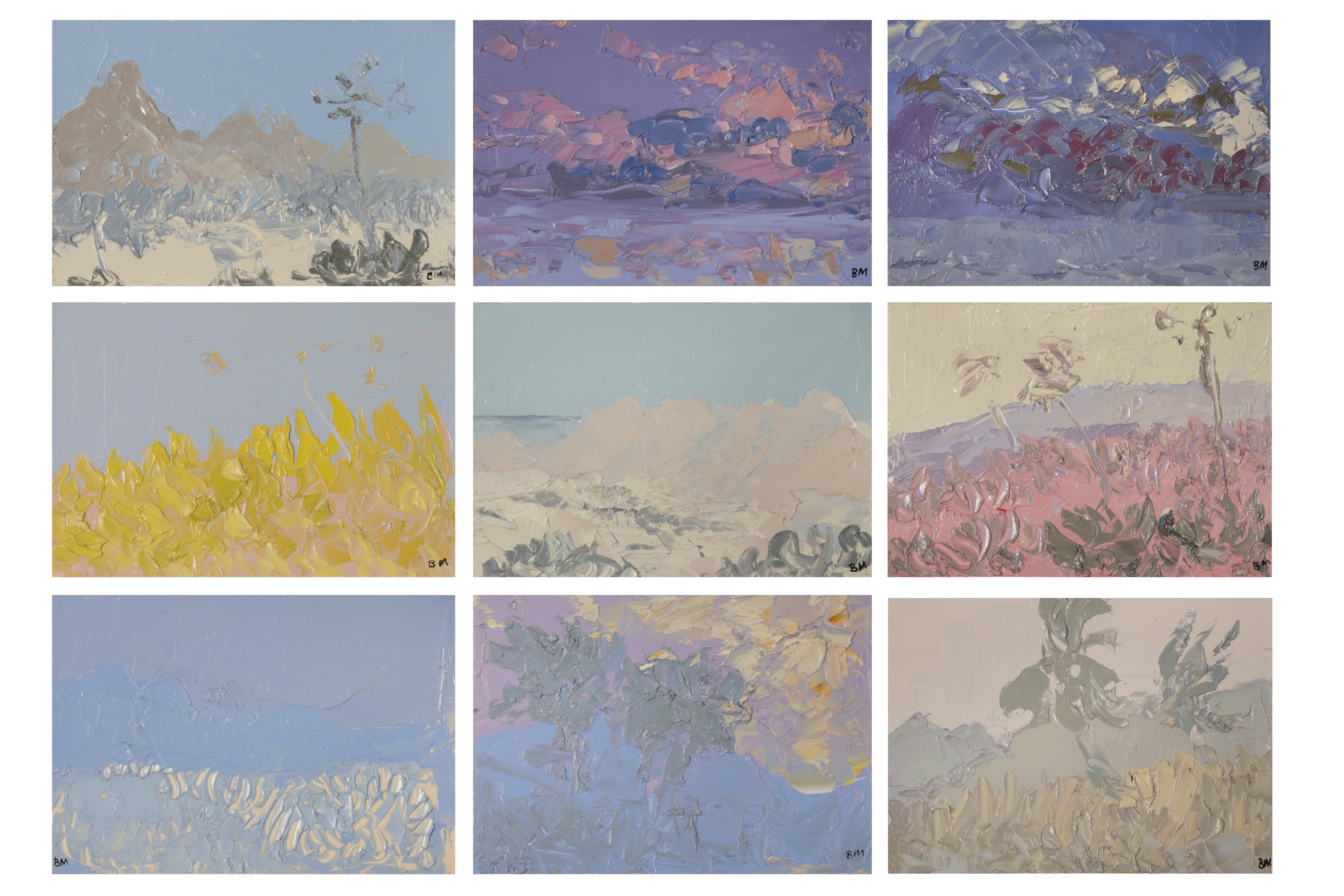
LOT 747 - SUNSET: TROU AUX CERFS; JUTE FIELD; LE MOME; SUNSET WEST COAST; CYCLONE WEATHER, TAMARIN RIVER; YUCCA PLANTS; RIVIÈRE NOIR; SUNSET, MOUTH OF RIVIÈRE NOIR (MAURITIUS SERIES) – NINE, EACH OIL ON CARD - £400-600 (9)
Similarly small and compelling are his oil studies of the female nude. Working at speed in front of the model subject he used a palette knife as much as a brush to create thick impastos and a compelling immediacy. Like so much else in the sale they are a reflection of Bernard’s deft touch, skilful execution, and consummate understanding of his materials and subject matter.
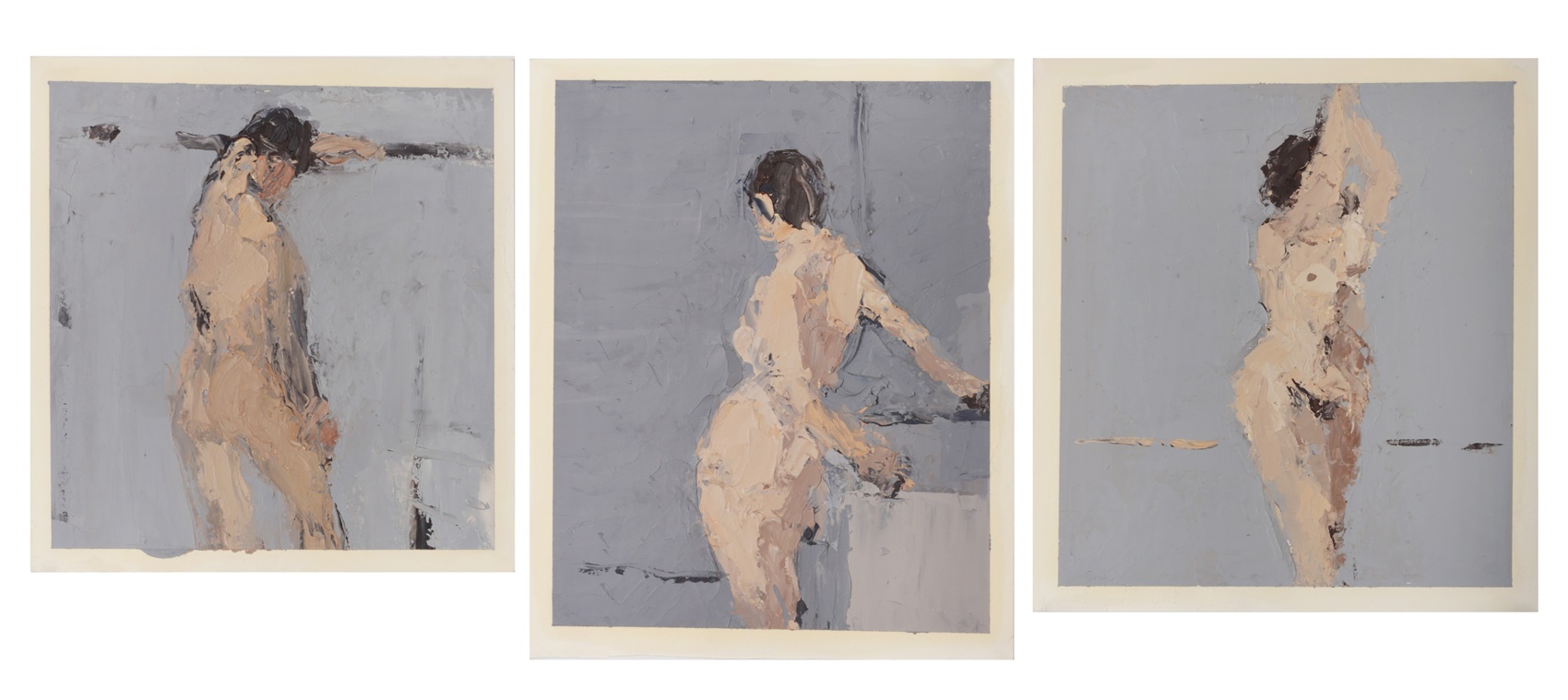
LOT 713 - NUDES, STANDING IN THE STUDIO: SET OF THREE - OIL ON PAPER - £200-300
Equal to Bernard's manipulation of oil, was his innovative use of pastel. Examples include vibrant abstracts inspired by his love of outer space and his excitement at the Apollo moon landings; still-lifes of fruit and flowers, or paint brushes and other accoutrements to be found around his studio. Bernard admitted that ‘…the way I use pastel goes quite against the grain. My system is smooth and tight and rather laboured, with the pastel carefully and slowly applied in distinct patches and layers.’
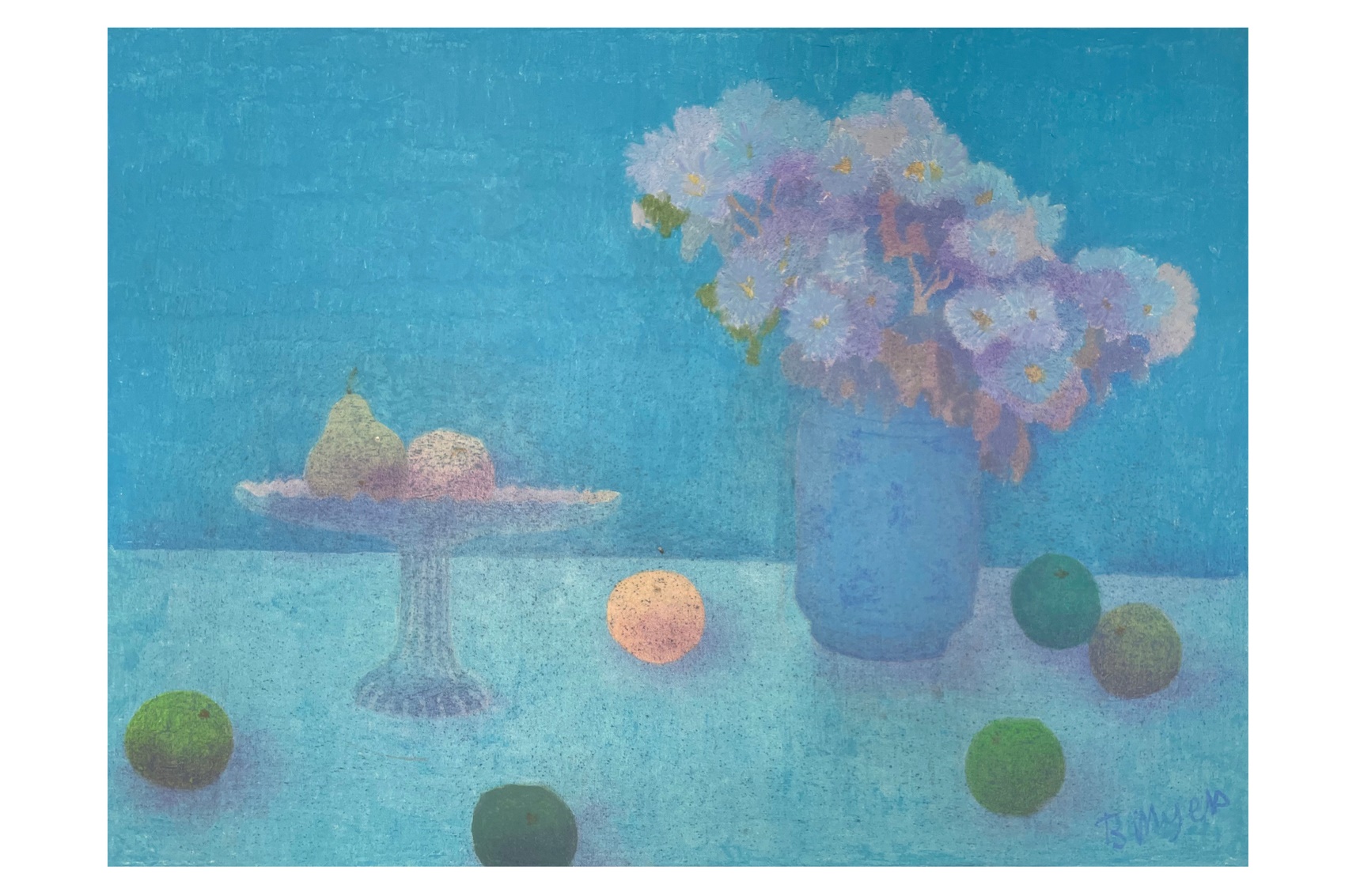
LOT 703 - STILL LIFE WITH A VASE OF FLOWERS, FRUIT AND CAKE-STAND – PASTEL ON PAPER - £250-350
There was a practical reason for his use of pastels: during the day he taught, mostly at the Royal College of Art. He explained: ‘I evolved the technique when confronted with the usual artist-teacher’s problems: lack of unbroken periods of time necessary for the start-to-finish development of a picture in one go. I need a medium in which each stage is complete in itself, ready for the next application... I found that oil pastels could give a finish close to tempera or encaustic painting...’ (quoted in ‘Still Life in Pastel’ in The Artist, May 1988, pp. 14-15).
Similarly, it was pragmatism about juggling his teaching commitments with his urge to paint that often dictated his subject matter: the humble still-life. Bernard commented: ‘Still-life is… very convenient to those of us who have to earn our living by means other than painting. Once set up it is there, ready and waiting and easily controlled.’ (The Artist, May 1988, pp. 14).
Of his teaching at the RCA, Rector of the College Christopher Frayling recalled: ‘Bernard Myers was a very special teacher in an art-school setting: genial, warm imaginative, down-to-earth, jargon-free, very efficient and always able to infect others with a wide range of his own enthusiasms.’ (Christopher Frayling, The Independent, 16 November 2007, p. 48).
Of his own juggling of his teaching responsibilities with his work Bernard observed: ‘Some artists find that teaching interferes with their work. I find it clarifies mine.’
To receive a complimentary art valuation from our dedicated specialist please email pictures@chiswickauctions.co.uk or submit an online valuation